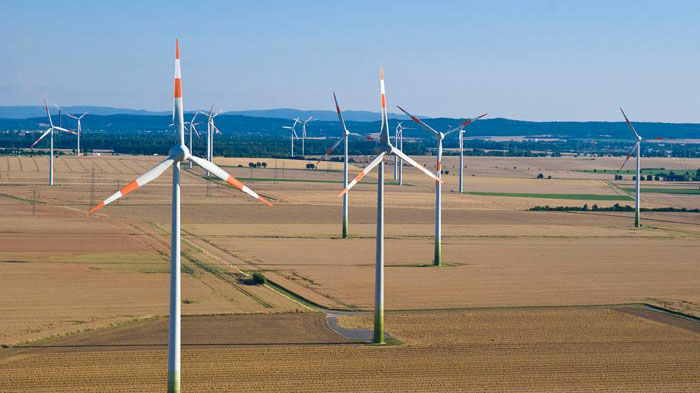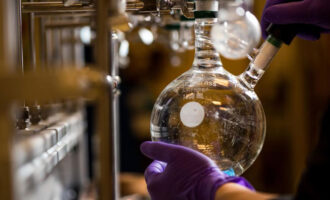
VTT helps solve erosion of wind turbine blade material using artificial intelligence
The erosion of wind turbine blade material is a surprisingly costly problem, which no one had been able to solve before.
“The blade material erodes due to the effect of rain, hailstones and sand dust, which significantly reduces the service life of wind turbines. Accelerated replacement of turbines becomes expensive: up to 2–4% of the value of all wind-generated power is lost as a result of this problem,” says Principal Scientist Anssi Laukkanen from VTT Technical Research Centre of Finland Ltd.
“It is a question of a classic problem within this particular industry that costs billions of euros and brings additional costs to all wind energy. As wind turbine sizes increase and wind farms are placed out on the sea in increasingly demanding conditions, the significance of the problem becomes emphasised,” says Laukkanen.
In its antiAGE project, VTT modeled the material problem and set out to solve it virtually. This is the first time that artificial intelligence (AI) was used for developing a material solution on this scale.
In principle, it is possible to find an unlimited number of different variations for the material used in wind turbine blades composed of the same material components but differing slightly from one another. Of all these alternatives, one would need to find the one that is best suited for this particular purpose and meets its operational requirements.
“Human perceptive skills are insufficient to visualise all the dimensions related to the optimisation of material solutions. AI, on the other hand, is capable of unraveling very complicated cause-and-effect relationships, simulating solutions and going through an infinite number of alternatives to find the one that works best in relation to the requirements set”, Laukkanen says.
In principle, using AI, it would be possible to find a tailored material solution optimised for a specific purpose for every component of any single product. However, manufacturing of such highly tailored materials would be difficult if traditional manufacturing techniques were used.
3D printing, or additive manufacturing, offers an opportunity to produce the desired material in any shape without unreasonable costs. When applied like this, 3D printing will do exactly what it is supposed to do.
The results of the antiAGE project exceeded expectations. Through a design process using virtual testing and machine learning, VTT was able to develop an optimised solution to a very difficult material problem in less than a year: a highly durable material that hardens when exposed to mechanical stress.
“When we published the news about our solution, wind turbine manufacturers became immediately interested in it. We are now negotiating details with commercial operators,” Laukkanen reports.
VTT is also applying for additional funding for the project, since there are plenty of targets for optimised material solutions in other sectors of industry as well. The more complex the product, the more expensive it is to develop materials suited for a specific purpose, and the more difficult it is in general to find material solutions that perform well. AI allows such problems to be addressed with efficiency.
echo '








